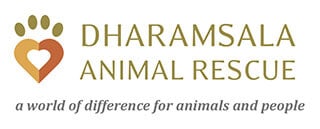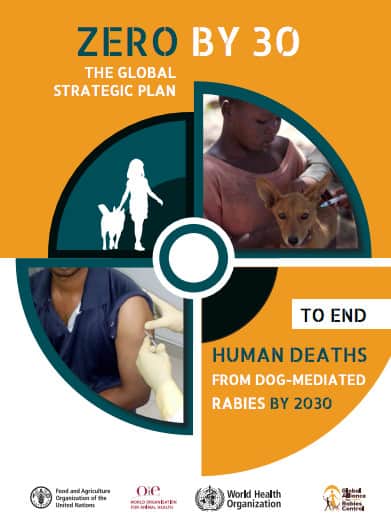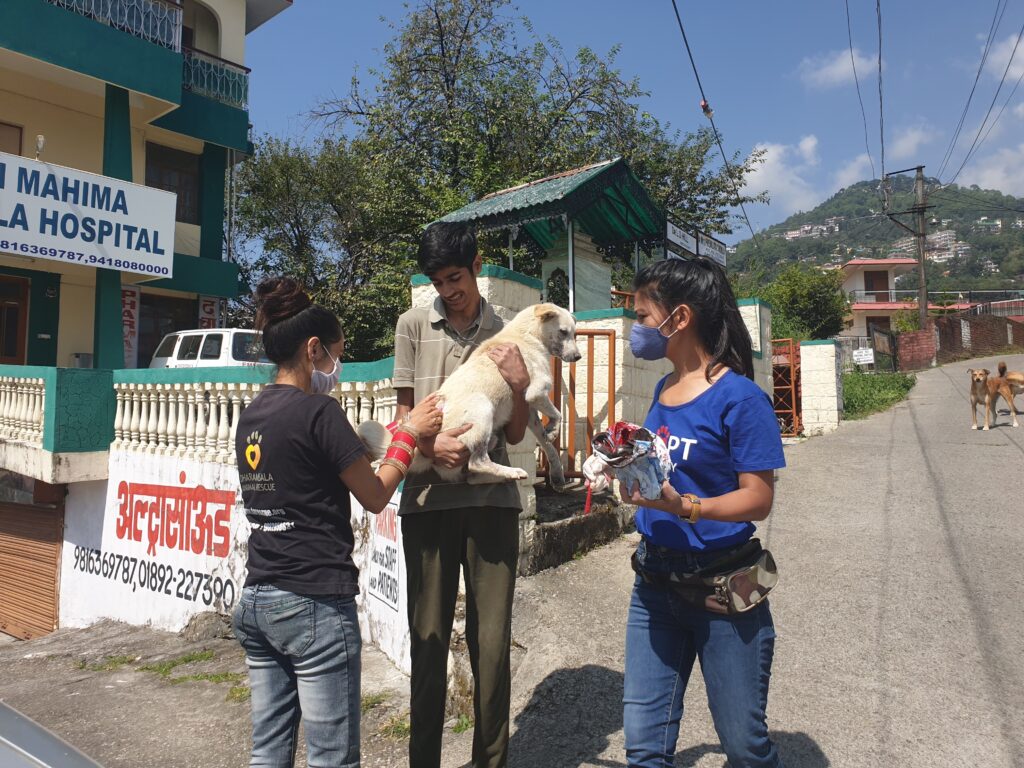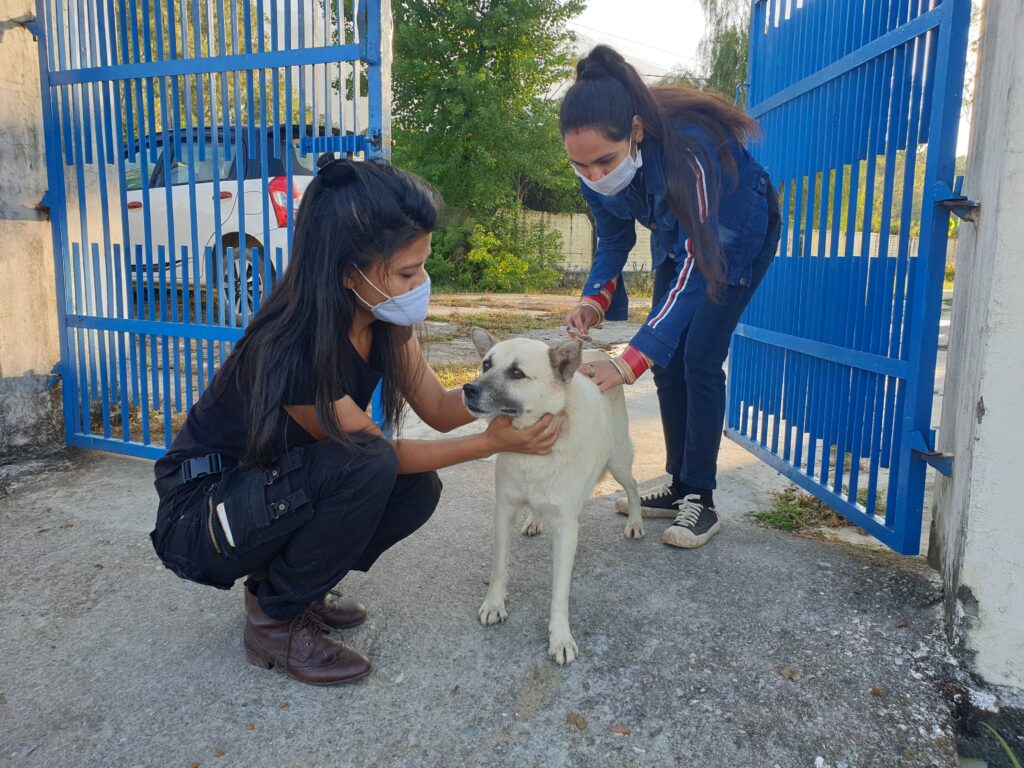Rabies is a deadly zoonotic virus (meaning it can spread from animals to humans) that kills an estimated 59,000 people every year.
India accounts for 36% of the deaths.
That’s one person every 9 minutes. Sadly, because India does not have rabies on the list of notifiable diseases, this number is likely to be even higher due to the number of unreported cases.
With 99% of human deaths being caused by dog bites, dogs have become feared by communities, leading to the persecution and death of millions of stray dogs around the world. Children and communities in poor and disadvantaged regions are the most at risk from rabies.
India has an estimated 30 million dogs living on the streets, making tackling rabies in the country a mammoth task. With no national programs for street dog vaccination, the onus falls on small NGO’s like ours to make our town safe from this deadly disease. This is why vaccinating dogs is such an important part of our work at Dharamsala Animal Rescue. We want to see an end to the suffering of both dogs and humans who catch rabies and to see them live happy and safe lives alongside each other.
The World Organisation for Animal Health, WHO and GARC have set a goal of ‘zero by 30’ — an elimination of rabies by the year 2030.
Why do we care so much about rabies?
Rabies is 100% fatal once a person or animal becomes infected and symptoms develop. But it is also 100% preventable. Vaccination is key to preventing rabies in both dogs and humans. It saves lives.
September 28th was World Rabies Day. Here at Dharamsala Animal Rescue, we marked the occasion with a 10-day vaccination drive aiming to vaccinate 2000 dogs. Our team is always working tirelessly to reach as many dogs as possible, as well as encouraging pet dog owners to keep their pet’s vaccinations up to date. Pre-Covid, we also provided education to children in local schools and communities on the safe handling of dogs, how to care for them, and how to spot the signs of rabies.
We need to create a stable and safe population of dogs, which can be achieved through neutering and vaccination. In areas where rabies is present, long term vaccination programmes are the most effective. A minimum of 70% of dogs must be vaccinated to significantly reduce the transmission to humans. In areas where such mass vaccination and neutering programmes run, huge reductions in cases of rabies in humans have been documented. But there is still a long way to go, and we will continue to play our part until we see an end to this terrible disease.
How does rabies spread?
Rabies is spread through the saliva of an infected animal when a person is bitten, or broken skin is licked. It is not spread in blood, urine or faeces and cannot penetrate through intact skin.
Once the bite/lick has taken place, the virus travels through the nervous system to the brain. This can take days to weeks depending on where the bite is, how far from the brain it is and the strain of the virus, as well as whether or not the person has been vaccinated. Once it reaches the brain, the virus replicates and symptoms begin to show. Rabies is usually diagnosed based on clinical signs as they are so distinctive.
What are the symptoms of rabies in dogs?
There are two types of rabies –
- Paralytic rabies (most common) – dogs will be weak, suffer paralysis of the limbs, have difficulty swallowing and be foaming at the mouth (hypersalivation). Eventually they will lose consciousness and death follows within 5-6 days.
- Furious rabies – these dogs will be hyperactive, aggressive, may have changes in their behaviour, and will eventually suffer from a fatal seizure.
Dogs with rabies can also be lethargic, stop eating and drinking, and have a fever.
What are the symptoms of rabies in humans?
Initially the virus causes non-specific symptoms – headache, lethargy, weakness and a fever. Specific symptoms include a tingling, pricking or burning sensation around the site of the wound/bite. The virus then quickly progresses to cause progressive and fatal inflammation of the nervous system and brain. Hyperactivity, hydrophobia (fear of water) and excitability are common and eventually lead to coma and death.
Paralytic rabies is less common in people but is a longer illness. It causes muscle paralysis starting at the site of the wound/bite and eventually leads to coma and death. It can easily be misdiagnosed and often goes unreported.
What should I do if I get bitten by a dog? / How do I stay safe when travelling?
It is best to consult your doctor before travelling to a country where rabies is present. A pre exposure prophylactic (PEP) vaccine will buy you time to find treatment. The World Health Organisation advises that you wash wounds thoroughly with soap and water for 15 minutes and seek medical attention as soon as possible to receive a post exposure vaccination.
It is always tempting to touch and handle dogs when we are travelling but remember to approach them safely and sensibly. Do not approach a dog showing any signs of rabies, and if you see a sick or injured dog, try to contact the nearest animal rescue or veterinary centre. Don’t not try to move or help the dog yourself. To learn more about rabies, take our DAR quiz.
How can I help?
A rabies vaccine costs us just $3 (includes vaccine, syringe, glove). By donating even a small amount you could help save the life of a dog and a child. Money well spent!
In the first 7 days of our vaccination drive we successfully vaccinated 1207 dogs. Your money can help us to provide even more dogs with the essential protection they need from rabies.
You can also vote for us in the World Rabies Day Awards from Global Alliance for Rabies Control. The award would give us a $1000 grant to enable us to continue our work. So please give us your vote and help us to save the lives of street dogs and the people of our community from this deadly and preventable disease!
Get our best articles straight to your inbox.
Subscribe to The DARling below:
About the author







